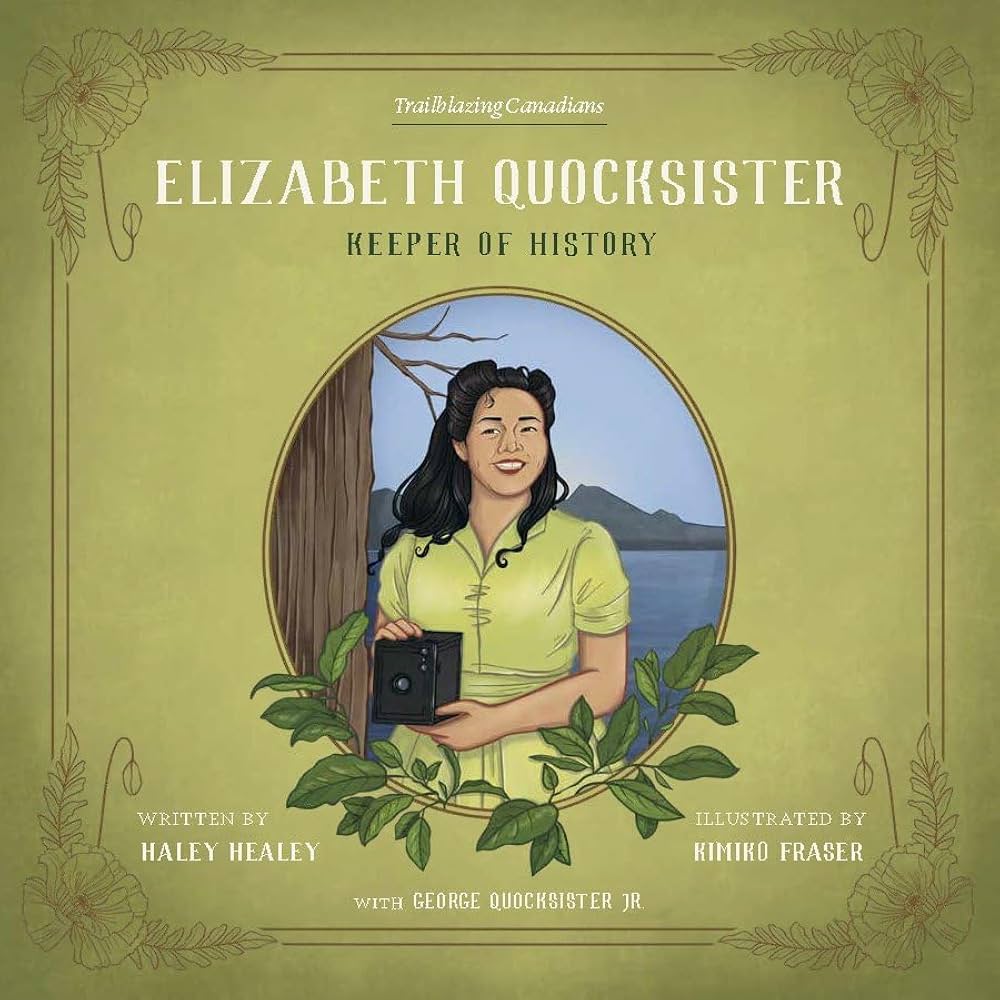Elizabeth Quocksister: Keeper of History

Elizabeth Quocksister: Keeper of History
Elizabeth also loved traditional foods. She grew beets, potatoes, and string beans in her garden. She and her kids picked strawberries, apples, and pears. She smoked salmon and canned deer and salmon so they could be eaten all year long.
One year, Elizabeth got a camera as a gift. She began taking photos wherever she went.
She took photos of family and friends, of her work at the fish canneries, and of her home and community at the Tyee Spit Reserve. The photos were important because they preserved the lives of Indigenous people – through the camera lens of an Indigenous woman!
Elizabeth Quocksister is a brief look at the life of Elizabeth Quocksister (1925-1981). Elizabeth took on many different roles in her life in British Columbia, including cultural teacher and photographer. She was given a camera and used it to chronicle her life, events, and the world around her.
Elizabeth, a member of the Da’naxda’xw Nation, eventually moved to Campbell River. She married and had 10 children with her husband, George Quocksister. She worked in fish canneries and as a nurse’s helper.
For much of Elizabeth’s life, the Canadian government banned and discouraged Indigenous language and culture. Elizabeth spoke her language, Kwak’wala, fluently, and met with her friends to secretly practice her language. She also celebrated her Kwakwaka’wakw culture, teaching her children to sew traditional clothing. When she was finally able to celebrate her culture more publicly, she taught her children and others her traditional songs and dances.
Elizabeth Quocksister is a part of the “Trailblazing Canadians” series, written by Haley Healey and illustrated by Kimiko Fraser. This series includes biographies of Jennie Buchart, Lillian Bland, and Kimiko Murakami, as well as Elizabeth Quocksister. The series focuses on bringing the lives of amazing Canadian women to young readers. This book was written with the assistance of Tsahaukuse, George Quocksister Jr., Elizabeth’s son.
As this book is for very young readers, only a small glimpse is given of Elizabeth’s life, but this glimpse shows how much she did during her life. Unfortunately, none of Elizabeth’s photographs are included in the book. Kimiko Fraser’s illustrations are beautiful and give a good sense of Elizabeth and her life, but including a photograph or two would have added a bit more to the book since Elizabeth was known for her photography.
Elizabeth Quocksister provides a look into and a celebration of the life of a trailblazing and inspirational Indigenous woman.
Daphne Hamilton-Nagorsen is a graduate of the School of Library, Archival and Information Studies at the University of British Columbia, Vancouver, British Columbia.
